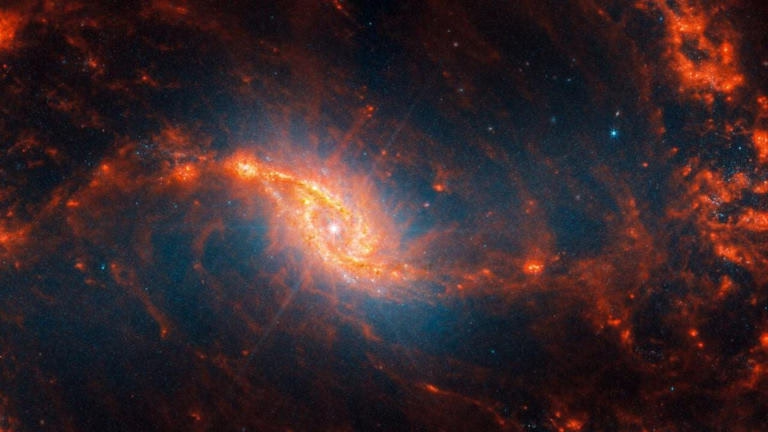A singularity—a point of infinite density and temperature—contained all of the universe’s matter and energy around 13.8 billion years ago. The fast expansion of this singularity is today known as the Big Bang.
The basic forces of nature, including gravity, electromagnetism, the weak force, and the strong force, started to manifest in phases during this explosive birth. Because of this, it all seemed too odd when the JWST discovered several galaxies that appeared to skip some of those phases.

For what reason do these galaxies predate the universe? Were they around prior to the Big Bang?
The universe was just 500–700 million years old when these galaxies were discovered, which is about 3% of its current age. The majority of theories at the time anticipated the formation of tiny, newborn galaxies since the cosmos was still in its infancy.
These recently discovered galaxies are far from little, though. Their stellar mass is many billions of times greater than that of our sun. It is possible that one of them may be 100 billion times more enormous than our sun. To put this into perspective, there are about 60 billion suns’ worth of stars in our own Milky Way galaxy.
#India’s National Statement at the 42nd General Conference of #UNESCO invokes world peace. States that “#Shanti, #Shalom, #Salaam” all mean peace. It mentions that the Vedic Om, the ancient Egyptian Amon, Judaic Amen & the Islamic Ameen all invoke the divine. pic.twitter.com/uQF4oYLgg6
— Vishal V. Sharma 🇮🇳 (@VishalVSharma7) November 10, 2023
In order to understand this topic, we need to look into red-shifting.A telescope picks up light that differs dependent on how old something in the universe appears. The quantity of red–and in what shade–indicates the age of a galaxy When that color changes to red.
The redshifts of these galaxies, however, from not just how old they are but also what their sizes and are made of (the massive stars in them).
Also Read: NASA’s Voyager 1 Astonishes With Its 15 Billion-Mile Reach
Follow US on Facebook, Youtube and Instagram.

